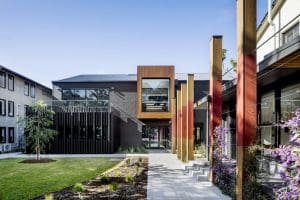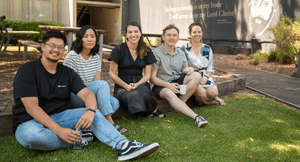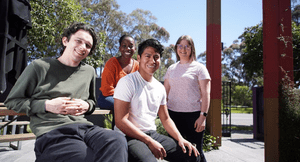Of course, it was always going to be a big deal in my social media feed when Billy Graham died. His shadow over conservative Christianity in the second half of the twentieth century was enormous, and his work to rehabilitate the word “evangelical” after WWII piques the interest of historians. During his turning-point crusade in Los Angeles in 1949, he re-enacted Jonathan Edwards’s sermon Sinners in the Hands of an Angry God to situate himself in that venerable tradition of learned evangelists, though he did carefully pluck out references to more classical Reformed theological themes like election, to make it just a little more palatable to his less Reformed audiences. In 1940s southern California, where the military industrial complex employed large numbers of internal migrants, and when the Cold War was hotting up, his preaching about the chaos of the times and the need to turn back to old-time religion was well received. He became a phenomenon.
The 1950s were spent travelling the world and preaching to some of the largest crowds ever gathered to hear the Gospel. My social media feed on the day of Billy’s death, not normally filled with pictures of sports stadiums, included the MCG from lots of different angles, telling the breath-taking story of the largest crowd ever assembled there not for an AFL Grand Final, but to hear a call to repent by an American visitor, fresh off the success of his London mission. Melbourne had warmly received many an American evangelist in its roughly hundred years of settlement, like the Reuben Torrey mission of 1902, when every house in Melbourne was door-knocked twice!
It wasn’t without challenges, with the backdrop of the Korean War from 1955 and the Soviet invasion of Hungary in 1956, or the scare that was sent to the organising team when just a few months before his arrival another American evangelist Oral Roberts was hounded out of town, and his revival ten burnt down in Jolimont. But modern media and Billy’s southern charm helped his cause no end. The Ridley library contains a scrapbook given to the College by the BGEA containing a cut out of every story published on the campaign while he was in the country. Personally, I love the one with the cool dark sunglasses, which may have been a little too much for the denizens of Camberwell to cope with.
One of the most intriguing things in the Ridley collection, however, is not the photo of the evangelist but a telegram from the US accepting the invitation to travel to Australia in 1959 in the first place. The buildings at Ridley had played host to some of the organising committee meetings, and the follow up of commitment cards was arranged in the Principal’s study, for Dr Stuart Barton Babbage was the chair of the local committee. And, as elsewhere, Ridley benefitted enormously from the crusades, as its numbers swelled in the aftermath of the visit. But it is the telegram which intrigues me for it is commonly assumed that the invitation to come to Australia was issued by the Archbishop of Sydney. An edited book sitting on my shelf, just published called Billy Graham: America’s Pilgrim, makes the same claim again. But I wonder if the story is more complicated, and needs to be revised. Leading businessmen in Melbourne were surely in close contact with the businessmen in Graham’s organisation, and Babbage was soon to move to Massachusetts to aid the merger of the Gordon College theological faculty with Conwell College in its move to Boston, for which Graham was a prime mover and its first president. Of course, it could just be that the BGEA sent the telegram telegram to the wrong address, but the jury is out.
But we should not lose the forest for the trees. The Graham visit to Melbourne was as close to revival as we have seen, with record attendances—especially at the MCG. By all other criteria, the mission was an extraordinary success, resulting in changed hearts and communities, with churches like St Stephen’s Richmond filled with converts. I suspect there are few readers of this blog who do not know someone intimately impacted by the 1959 Crusade, or perhaps by other visits in the succeeding years. Many of our leaders in the post WWII period were converted and trained by Billy Graham and his ministries. Evangelism on this scale produces not just new Christians but the context in which evangelistic endeavour and strategic thinking are encouraged, for the benefit of all our churches. Though some attention has been given recently to exploring Graham’s historical impact in Australia, we still await keen doctoral students who can explore these questions further, especially the question of the telegram. We need a new generation of researchers to explore our story and teach about the delights and disasters of evangelical history. The historiography on Billy Graham is just getting started.






